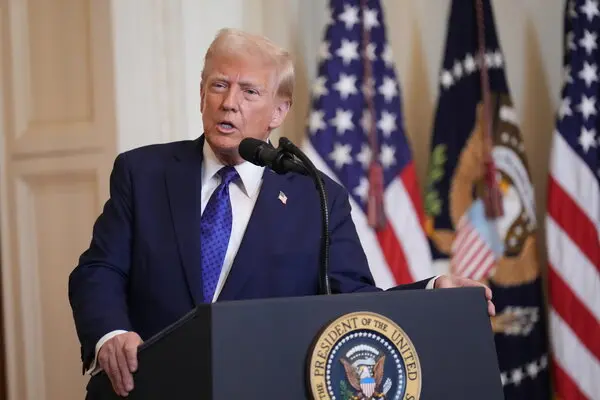In a move that is shaking up global trade, the United States has imposed new tariffs on imports from Mexico, Canada, and China. The decision, announced by President Donald Trump, includes a 25% tariff on Mexican and Canadian imports and a 10% tariff on goods from China. Interestingly, India has been exempted from these new tariffs, sparking discussions about the geopolitical and economic implications of this strategic decision.
Key Highlights of the New Tariffs
- 25% Tariff on Mexico and Canada: The U.S. government has decided to levy heavy duties on imports from its neighboring trade partners, citing the need to protect domestic industries and address trade imbalances.
- 10% Tariff on Chinese Goods: The new tariff on China marks another chapter in the ongoing trade war between the two superpowers, with Beijing already warning of countermeasures.
- India Exempted: Unlike other major exporters to the U.S., India has not been included in the new tariff regime, suggesting possible diplomatic and economic considerations at play.
Why Did the U.S. Implement These Tariffs?
The official stance of the U.S. administration is that these tariffs aim to:
- Reduce the trade deficit by discouraging imports and boosting domestic production.
- Protect American industries from foreign competition, particularly in manufacturing and technology.
- Push trade partners into renegotiating trade agreements that favor American economic interests.
China’s Response – Retaliation on the Horizon?
China has swiftly responded to the U.S. tariffs, vowing to implement countermeasures. A spokesperson from Beijing emphasized that “there are no winners in a trade war” and urged Washington to seek a diplomatic solution instead of unilateral action. Historically, China has countered such U.S. trade measures with reciprocal tariffs, restrictions on American companies operating in China, and even shifts in supply chains to alternative markets.
Impact on Businesses and Consumers
The new tariffs are expected to have wide-reaching effects:
- Higher Prices for U.S. Consumers: With increased costs on imported goods, American businesses may pass on these costs to consumers, leading to inflationary pressure.
- Supply Chain Disruptions: Companies reliant on imports from affected countries may have to adjust their supply chains, potentially increasing costs and production delays.
- Market Volatility: The stock markets may react negatively, especially industries dependent on global trade, such as technology, automotive, and retail sectors.
India’s Exemption – A Strategic Move?
One of the most surprising aspects of the announcement is that India has been left out of the new tariff structure. This could indicate a deepening of U.S.-India trade relations, as Washington seeks to strengthen its alliance with New Delhi against China’s growing influence in global trade.
What Happens Next?
As the situation unfolds, key developments to watch include:
- China’s Countermeasures: Will Beijing impose retaliatory tariffs or restrictions on U.S. companies operating in China?
- Mexico and Canada’s Response: These North American trade partners may seek legal action under trade agreements such as the USMCA (United States-Mexico-Canada Agreement).
- Market Reactions: Investors and businesses will be closely monitoring the economic impact of these tariffs.
Conclusion
The U.S.’s latest tariff imposition is a bold move with significant implications for international trade. While it aims to protect American industries, it also risks trade tensions, higher consumer prices, and potential economic retaliation. With China signaling countermeasures and global markets reacting, the coming weeks will be crucial in determining whether this decision leads to renegotiated trade deals or escalates into another full-scale trade war.
Stay updated as we continue to monitor this developing story. Share your thoughts in the comments—how do you think these tariffs will impact the global economy?














